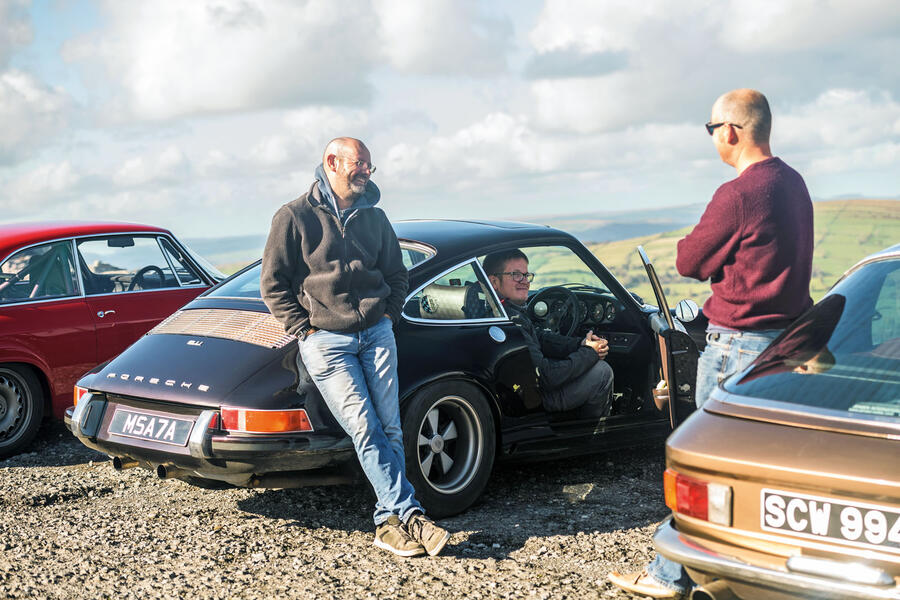But it’s the handling that makes it. Before I drove the GTA-R, the man from Alfaholics said it was more rewarding than a Ferrari 430 Scuderia, which I humoured with a ‘well, he would say that’ sort of nod.
Yet its balance is so good that I think he’s right. Going into a corner there’s a touch of understeer, which you can trail brake through, or you can just turn in slightly too fast, get on the gas and power through, with the GTA-R telegraphing perfectly that it’s about to slide, foursquare but slightly rear biased, through any turn you like. It might just be one of the 10 most enjoyable cars I’ve ever driven. On track, at least. On the road? Over to my colleagues.
Matt Prior
The daily grind
A long day of full-on track driving has passed by the windscreens of our three restomods, and the closest we’ve come to trouble in any of them has been some hot, smelly brakes. What can you say to that – except ‘bravo’? It proves beyond a doubt that the major mechanical renovation of cars like these isn’t just for show; it achieves pretty remarkable results.
Now for some tough testing of a different kind. Our digs for tonight are 50 miles west, near Carmarthen. But before we can head for them, Disdale and I have a two-car mission to Magor services 50 miles to the east, to deposit a car that someone will eventually need for onward transport. Sounds like a simple trip, but much of it will be done in the dark and cold, in rush-hour traffic. These will be the sort of miles that modern cars make so easy but old ones generally don’t.

I already know what kind of time Prior’s going to be having as he pedals the Porsche westwards – because, after a dark, spluttering 6am start, I brought it from the Midlands to south Wales this morning myself. But for some heavy controls and a particularly noisy set of pipes, though, our 47-year-old 911 is pretty easy to drive. The brakes are brilliant. The headlights and wipers are first-class. In many ways, it doesn’t feel like an old car at all.
The car has lowered torsion bar suspension, which makes for a ride that feels a bit wooden over sharper bumps, and for a steering rack that needs plenty of heft to get it beyond a quarter-turn. If you took exception to either characteristic, though, you’d just commission the good people at Tuthill Porsche to configure the car differently. You can have what you want, after all; old 911s, they say, are supremely adaptable things. The carburetted engine is smooth, torquey, characterful and potent enough, with only the occasional tendency to stall when slowing down from a long cruise. It demands some care when you’re accelerating from low revs so as not to over-fuel it, while the notchy gearbox likes a deliberate, well-timed shift and the odd double-dab of clutch. You soon get used to both, though. Other than that, you just need to be careful not to put petrol in the oil tank by mistake (an exterior oil filler just behind the driver’s door was one of the curios of the E-series 911).